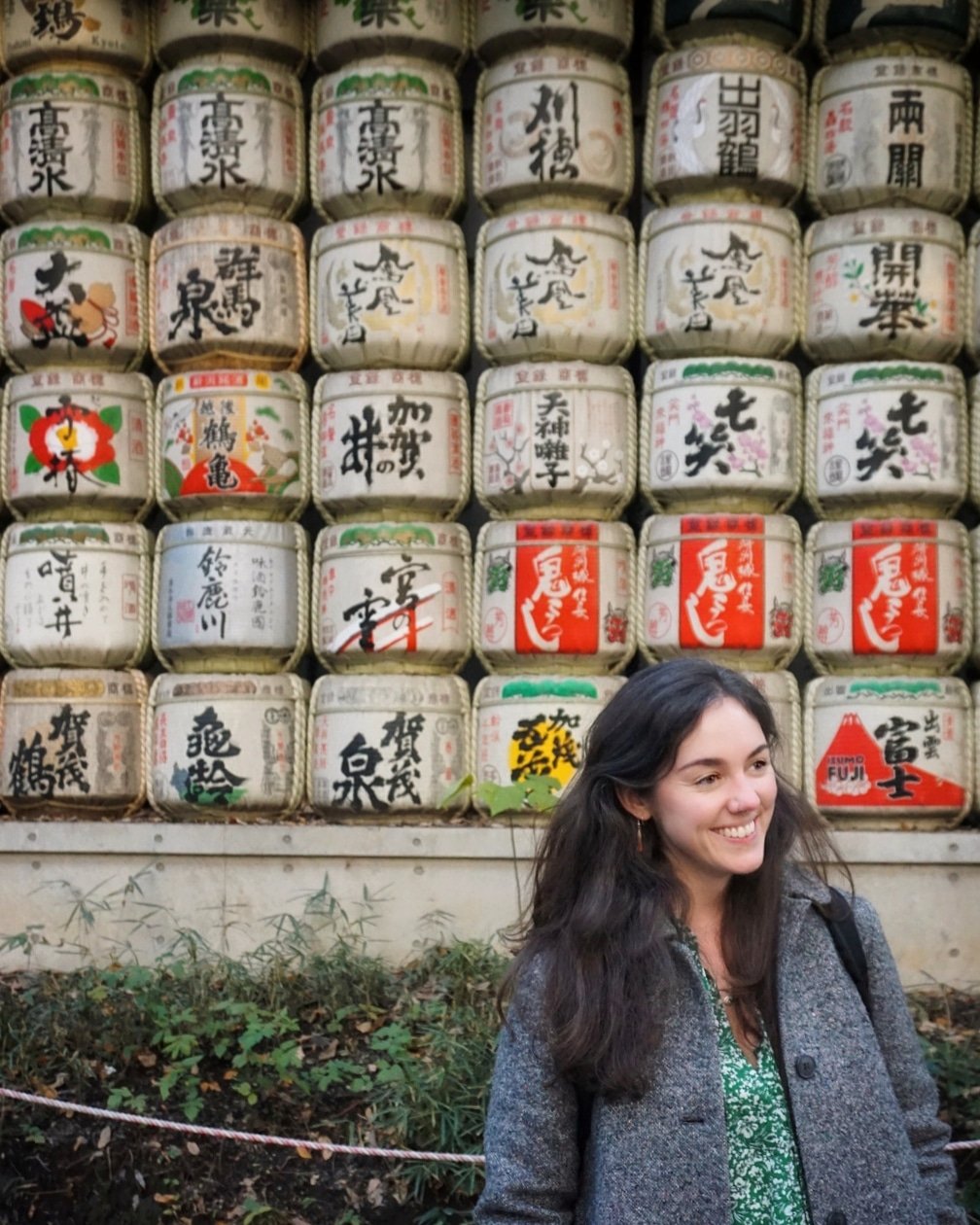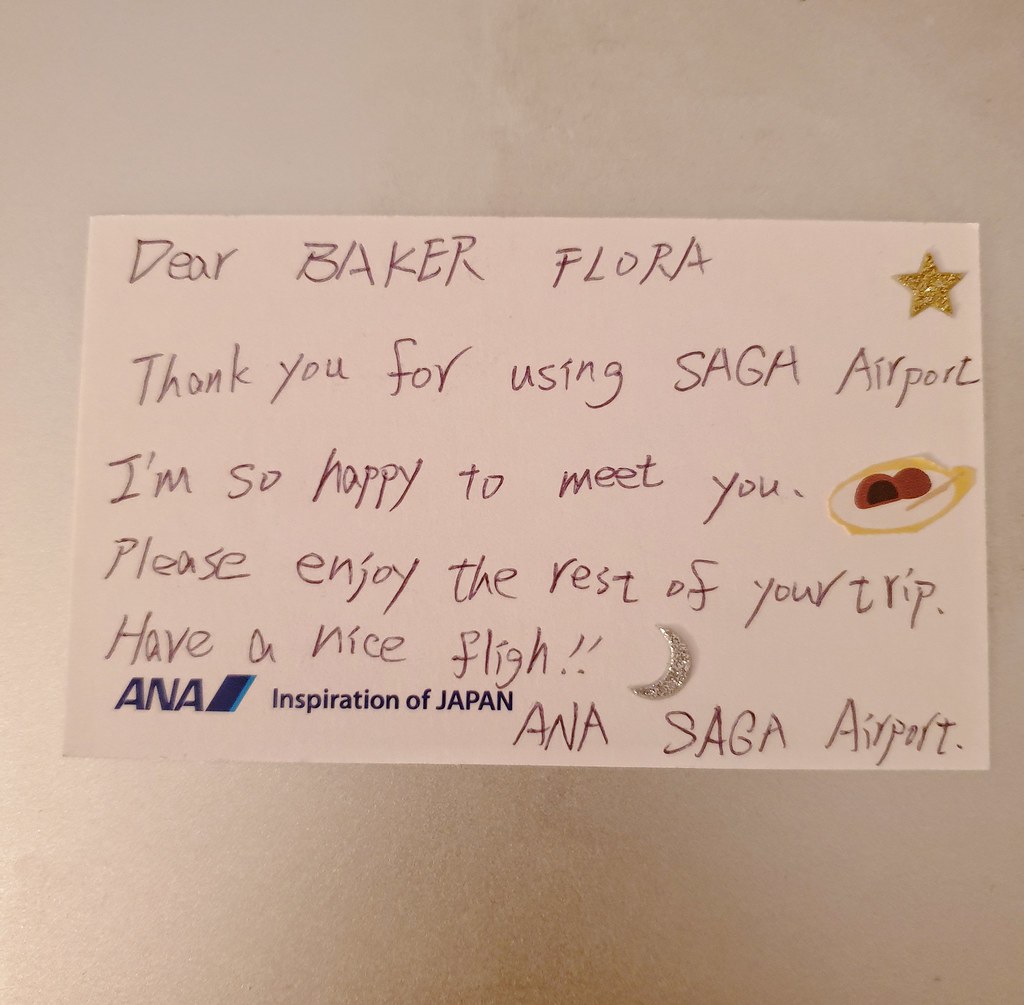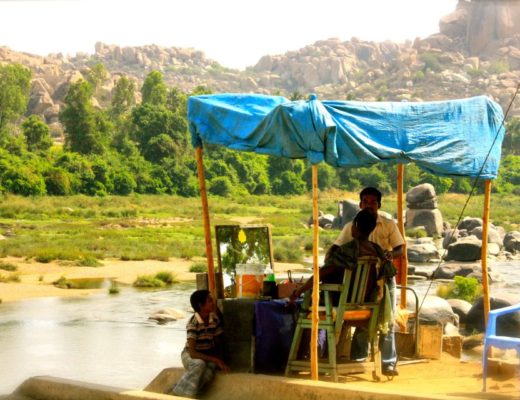I barely remember my first time in Japan.
Although I was only eight years old to be fair.
In 1996, Japan was a world away from my childhood life in London – a place which had barely crossed my mind – but then my dad got a job directing a play in Tokyo, and that summer my mum and I flew out to join him. We spent a month exploring Japan as a family, and for a child who’d never been out of Europe before, my first time in Japan was nothing short of incredible.
Alas, my memories now are somewhat hazy. I can remember the sugar-fuelled excitement of Goofy’s bouncy house at Tokyo Disneyland; eating hot vending machine spaghetti on the grass at the base of Mount Fuji; staring wide-eyed at the perfect plastic food replicas outside restaurants.
I remember my dad’s joy at the high-speed trains which arrived the exact second they were expected, and my mum’s happiness when a group of Japanese businessmen sent over a bottle of sake to our restaurant table – followed by a bowl of ‘hot and cold ice cream’ for me to try. And of course I immediately fell in love with sushi.
Japan was the first truly different country I ever travelled to, and ever since it’s been firmly lodged in my mind as the most wonderfully surreal place. So when I finally returned to Japan almost two decades after my first visit, I was over the moon to discover that it’s just as fascinating as I remembered!
But it’s different navigating a country as an adult. I also had to get to grips with a number of things, from following traditional rules about shoes, slippers and toilet etiquette to learning the correct way to wash my hands at temples and how to eat my noodles.
So if it’s your first time in Japan, here are some of the things you should know before you go.
Pin me for later!
1. Japanese toilets are just as incredible as you’ve heard.
They speak, they clean themselves, they come with all manner of gadgets and gizmos – and the ultimate amazing factor? The toilet seat is heated. It seems like all of Japan’s toilets are amazingly high-tech, including public bathrooms in airports, at restaurants, and even on the street.
The full extent of Japan’s bathroom services can get a bit complicated for us tourists, so luckily there’s usually a sign (or five) on the wall to help you understand what to do. As long as there’s an English translation available, you can choose from a range of buttons on the wall-mounted control panel to invoke bidet-like water jets, a speaker playing birdsong, or the sound effect of running water to mask any noises you might be making.
The only downside? Normal temperature toilet seats will feel like something of a disappointment afterwards.
Read more: the worst toilets I’ve ever experienced on my travels
2. Shoe etiquette in Japan is a real thing.
It’s considered impolite to wear shoes inside in Japan. Pretty much anywhere you go – hotels, temples, restaurants and tourist sites – you’ll be expected to remove your shoes at the small atrium just inside the door, a space known as ‘genkan‘.
As with many traditions in Japan, this one harks back over many generations. The floors of Japanese homes and buildings have long been laid with tatami mats (woven straw mats), and they’re really hard to clean if you’re tracking outside dirt onto them. When you combine this with the Japanese custom of eating and sleeping on the floor, it makes sense that outdoor shoes don’t belong there.
What’s more difficult to get used to is the specific method by which you have to remove your shoes – which goes something like this:
- Step into the ‘genkan‘
- Walk towards the raised step which signifies the separation between ‘outdoor’ and ‘indoor’
- Turn back to face the door you’ve entered through
- Nudge your outdoor shoes off, making sure they remain pointing towards the outside world
- Step backwards and up onto the step behind you, either in your socks or in slippers (which have been provided by the place you’re entering)
- Leave your outdoor shoes waiting patiently for when you return
My top tip? Wear shoes which are easy to slip on and off when you’re in Japan – it’ll make your shoe-related life much easier.
3. Get used to wearing slippers everywhere indoors – except on tatami mats.
Generally speaking, slippers are worn everywhere indoors – except for when you encounter tatami mats. The soles of slippers are considered not clean enough to touch tatami, so you take your first set of slippers off and then continue walking in your socks.
This can get confusing.
Case in point: in one traditional hotel I stayed at, there were tatami mats in the restaurant but nowhere else in the building. That meant I removed my outdoor shoes at the genkan, put on hotel slippers to carry my suitcase to the lift, exited the lift and had to remove my slippers again because the lift had opened to tatami matting.
Thankfully nobody expected me to understand exactly when to switch from shoes to slippers to socked feet to slippers again – but it’s worth knowing the customs exist. Particularly when you come face to face with ‘bathroom only’ slippers…
4. Wear double socks if you’re prone to cold feet (and to hide any unexpected holes!)
After taking my shoes off I spent so much time in castles, temples and shrines walking around on tatami mats, which don’t really retain any heat. If you also have terrible circulation in your feet like I do, this is a crucial thing: wear two pairs of socks in Japan!
The positive aspect of double socks is there’s less chance of revealing any unsightly sock holes. While it’s understandable that you wouldn’t intentionally put on worn-out socks, I often end up with toe holes and was a little nervous about this happening in Japan. Double socks = zero problems!
5. Public foot spas must be tried to be believed.
For a country so concerned with dirty shoes and foot hygiene etiquette, it seems conflicting that Japanese people are also keen to sit in public spaces and soak their legs in hot water.
But thanks to the hot springs (‘onsen‘) which criss-cross Japan, the country is filled with public outdoor foot spas, known as ‘ashiyu‘. These shallow pools of hot volcanic water are usually placed at street corners and are free for anyone to use.
A particularly special version of an ashiyu is this wooden steam foot bath in Ureshino, Saga Prefecture. These aren’t a common sight and our Japanese guides were really excited that we tried it out!
6. You can soak in a private onsen on your hotel roof.
Japan’s volcanic landscape means there are hot springs (‘onsen’) all over the country – and understandably it’s resulted in a lot of onsen tourism, with entire towns clustered around a hot spring.
Public onsen is the most common way to experience the hot spring lifestyle, where both indoor and outdoor bath houses are separated by gender. Some of the rules for a public onsen include:
- getting naked
- washing your body before getting in
- not using soap in the water
- tattoos are not usually allowed (although some places are OK with it)
If you’re not too keen on being naked in a communal bath, there are also lots of ryokans (traditional Japanese guesthouses) which offer private onsen attached to your bedroom. Sometimes they’re even on the roof!
7. It’s traditional to sleep on the floor in Japan.
Many Japanese people sleep on a futon mattress laid out on the floor. The most common reason seems to be because it allows for more space: once you’ve woken up you can pack away your bedding and use the room for other activities. Sleeping this way can also save you money (as a futon is much cheaper than a bed frame and mattress!) and keeps your body in better alignment during the night.
If you stay in a ryokan (a traditional Japanese guesthouse) then you’ll most likely sleep in this traditional Japanese style (although they often have modern rooms available too). Don’t be surprised when you check into your room and don’t see a bed – staff will set up the futon while you’re at dinner.
Here’s a tip: if the futon mattress feels too thin for you, check behind the sliding wardrobe doors as there are often more mattresses hiding away. One night I had a ‘Princess and the Pea’ situation and eventually ended up sleeping on approximately four futons laid on top of each other – which was a lot more comfy.
8. Japanese breakfasts can be absolutely epic.
In all the countries I’ve travelled to, breakfast in Japan is the most lavish I’ve ever seen. It typically includes a bare minimum of steamed rice, grilled fish and miso soup but can involve dozens of components too: little dishes of sides like pickles, egg, cold noodles, tofu, vegetables like onion and pepper, and dried seaweed. It’s all washed down with a big pot of green tea.
The sheer number of different dishes means you can have little mouthfuls of everything in rotation. Perfect for a grazing type of eater like me!
Most ryokans will serve a traditional Japanese breakfast with local delicacies. However, just in case eating rice on an empty stomach every day is not your idea of a good breakfast, double-check if your chosen accommodations serve continental breakfasts too.
9. Japanese restaurants display plastic food replicas outside to tempt you in.
My absolute favourite memory from my first time in Japan? Standing with my nose pressed against restaurant windows, staring at the plates and bowls of perfectly detailed food – all of which was fake. But it looked so damn real!
Japan’s replica food industry began in the 1930s and is now worth $90m. These faithfully reproduced bowls of ramen, platters of sushi, tempura prawns and even pints of frothy beer are made from wax and plastic, and they allow foreign visitors to point at their chosen dishes instead of scrutinising a Japanese-only menu.
You can also buy mini versions of these models in the form of magnets, erasers, pencil sharpeners and key-rings – which is why I’m now the proud owner of a piece of prawn sushi stuck onto my fridge.
10. Food in Japan is more raw than you’d think!
Back when I was eight years old, I used to boast smugly about how delicious I found ‘raw fish’ – yes, my love of sushi made me insufferable – but I hadn’t quite understood the extent of Japan’s adventurous eating.
Japan’s cuisine involves strong flavours, peculiar textures, and using every part of an animal. Often when it’s thinly sliced and raw, sashimi style. On this trip, I ate at a roadside restaurant where we grilled our own oysters, scallops, clams and sea urchins; I was offered raw beef tongue and a strange cheese made from sake run-off; but the pinnacle was one evening in Tokyo where I was presented with raw chicken sashimi. A lifetime of warnings about salmonella from my anxious mother meant I had a total inability to even contemplate eating it.
11. Japan has an eternal love of ramen.
The delicious noodle broth dish known as ramen is everywhere in Japan, available both as a dried, pre-packaged option and at sit-down restaurants. The solo dining experience at Itchiran, a ramen-only chain, is amazing – but my crowning ramen-related moment was actually at a 7-Eleven.
I stood with my Japanese guide looking at the floor-to-ceiling shelves stacked with three dozen different kinds of packaged ramen and asked if she was familiar with all of them. Immediately she started pointing at different ones: “That one is my favourite,” she said, “and this is the spicier one… this one I always have in the cupboard but it’s a quick dinner… and that one I eat when I’m drunk…”
12. Slurping your food is encouraged.
Given that Japan has a strong focus on politeness and etiquette, it’s a wonderful anomaly to sit in a restaurant and listen to your fellow diners noisily slurping their food. But in Japan, loudly sucking up your noodles is a sign of enjoyment – and there’s a logical reason too, as it allows air to circulate around the noodles and cool them down, enhancing the flavour.
Unfortunately, it’s also one of Japan’s cultural aspects which hasn’t translated well to foreign visitors. There’s even a name for it – nu hara – which sounds Japanese but is actually a shortened form of the phrase ‘noodle harassment’. Someone on Twitter mentioned it and the name spread like wildfire!
13. You’re actively invited to eat by yourself.
Japan has a nation-wide chain of ramen restaurants called Itchiran, which is famous for its complete lack of face-to-face interaction. The process goes as follows:
- Pay for your ramen at the automated vending machines
- Step into a narrow room divided into booths big enough for just one person each
- Sit down and order your chosen ramen dish by circling items on a paper menu
- The hanging curtain in front of you rises up
- A pair of hands appears and quickly takes your paper menu away
- After a few minutes, a steaming bowl of ramen is thrust onto the table
- You eat, happily slurping away in total privacy and anonymity!
As a self conscious person, eating at Itchiran was absolutely incredible. And their ramen is pretty damn tasty too.
14. You can buy anything from a vending machine – even seaweed!
The Japanese love convenience, which might explain why you’ll see vending machines everywhere in Japan. Usually brightly painted and placed in stations and on the street, lots of Japanese vending machines stock typical stuff – like packaged snacks, sandwiches, and hot and cold drinks – but there’s more unusual machines too.
Take your pick from comic books, clothes, batteries, bananas and beer, and if you happen to fly through Saga airport you should keep your eye out for this nori vending machine I saw! Turns out the Japanese love dried seaweed so much that it needs to be available at all times.
15. Japan has over 300 flavours of Kit Kats.
Kit Kat chocolate bars are really popular in Japan – and a cursory Google search reveals why. The name sounds like ‘kitto katsu’, a common Japanese expression of good luck, so Kit Kats are often given to wish people luck.
In the last twenty years, Nestle has released more than 300 Kit Kat flavours including apple, chestnut, soy sauce, miso soup and wasabi. Some have only been available for a limited run, while others are specific to different regions of Japan – so when we left Saga in Kyushu Prefecture I was able to get my hands on Kyushu’s local Kit Kat, flavoured with purple sweet potato!
16. The Japanese love giving gifts.
When I first visited Japan as a child, I was literally weighed down with gifts from my dad’s Japanese cast at the theatre: jointed puppets, my name artistically painted in katakana characters, and a Disney music box which I still have today.
It happened again on this trip too. Within hours of my arrival in Tokyo I’d already been gifted a box of beautifully hand-painted chopsticks from a sushi chef – and over the next few days I amassed little folded pieces of origami, a handful of badges, stickers, postcards, key rings, and a huge amount of food.
Along with the souvenirs I managed to cram in, my suitcase weighed an extra five kilos by the time I flew back back home. And when I checked in for my flight, the kindly airline staff even gave me a little bag filled with gifts and a note. How’s that for Japanese hospitality?!
Pin this article if you enjoyed it!
NB: my trip to Japan was supported by Tokyo Metropolitan Government and #KyushuxTokyo – but the observations about plastic food and talking toilets are all my own.






















2 Comments
Globetrotting Lottie
January 19, 2020 at 8:14 pm300 flavours of Kit Kat – get me there now!
I’m planning a trip to Japan (my first time) later this year so this is a really nice insight.
A Day Trip to Shibamata, Tokyo's Retro Japanese Neighbourhood
January 23, 2020 at 12:12 pm[…] when you’ve just arrived in Japan, there’s no time to waste. So the next morning, still jet lagged and unsure of what time my […]